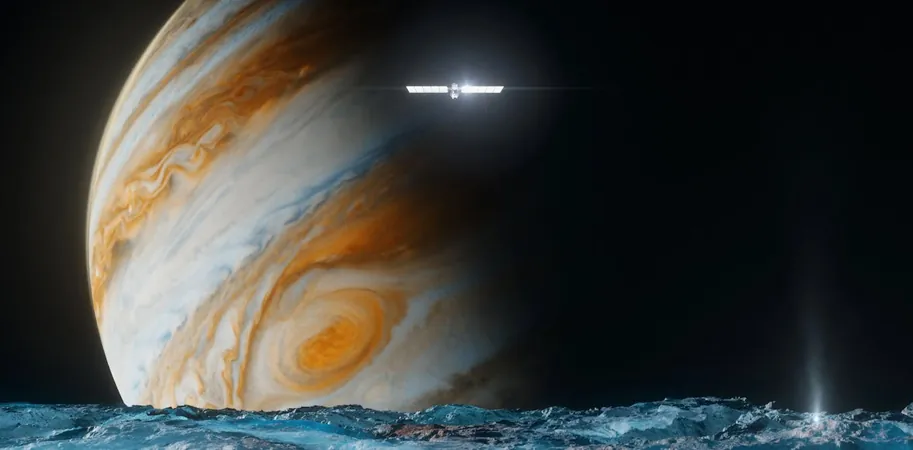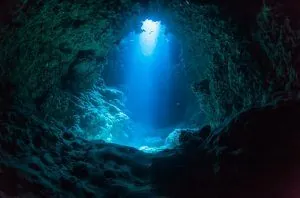
NASA's Groundbreaking Mission to Uncover Life on Jupiter's Moon Europa!
2024-10-06
On October 10, NASA will embark on an exciting journey with the launch of the Europa Clipper mission, specifically designed to explore Jupiter's intriguing fourth-largest moon, Europa. This ambitious spacecraft aims to investigate potential habitats that could support extraterrestrial life.
The Europa Clipper stands out as NASA's largest planetary exploration spacecraft to date, stretching nearly as wide as a basketball court when its solar sails are fully deployed. With a hefty mass of around 6,000 kilograms—equivalent to that of a large African elephant—this mission represents a significant leap in space exploration.
Why Europa is the New Frontier in the Search for Life
While Mars has traditionally been the focus of extraterrestrial life searches, its harsh conditions—including a thin atmosphere and high radiation levels—make it less than hospitable. Instead, researchers are turning their attention to bodies orbiting the gas giants of our Solar System, particularly certain moons that are believed to harbor liquid water beneath their icy surfaces.
The availability of liquid water is crucial; here on Earth, it is essential for all known forms of life. The gravitational forces exerted by massive planets like Jupiter and Saturn create conditions that allow these moons, including Europa, to maintain subsurface oceans—primed for supporting life.
Europa's surface shows signs that it may, in fact, have a global ocean beneath its icy crust. Observations suggest a young surface that has been frequently renewed, possibly by ice volcanism. Additional evidence, such as the presence of a magnetic field, suggests that Europa could possess a liquid layer beneath its surface, akin to Earth's molten rock core.
What’s in Store for the Europa Clipper?
The mission will conduct "flybys" of Europa's surface, collecting data from different areas where life might exist beneath the ice. To facilitate this, the Europa Clipper is equipped with nine sophisticated scientific instruments. These tools include:
- **Wide-Angle Camera**: To capture geologic activity and morphological features of the moon's surface.
- **Thermal Imaging System**: To analyze temperature variations and identify potential warmer regions indicative of subsurface activity.
- **Spectrometer**: To determine the chemical make-up of Europa’s surface and detect any water plumes that could arise from the ocean below.
- **Mass Spectrometer**: To scrutinize the composition of Europa's thin atmosphere and any erupting material from the surface.
- **Dust Analyzer**: To study particles ejected from Europa’s surface due to meteor impacts, which may provide clues about the moon's geological history and ocean composition.
Despite the excitement surrounding the mission, it will take more than five years for the Europa Clipper to reach its destination. While it will not produce immediate evidence of life, the data collected could reveal whether the conditions are right for life as we know it.
The Road Ahead: Patience and Future Exploration
The Europa Clipper mission represents just the starting point in our quest to discover life beyond Earth. While we eagerly await results from this groundbreaking expedition, it can only hint at the possibility of life existing in geometric and unimaginable places within our Solar System. Future missions will be necessary to delve deeper into Europa's secrets and confirm any intriguing findings.
As NASA continues to push the boundaries of space exploration, the Europa Clipper mission stands testament to humanity's unyielding curiosity—paving the way for potentially monumental discoveries that may redefine what we understand about life in the universe. Get ready; the adventure is about to begin!







 Brasil (PT)
Brasil (PT)
 Canada (EN)
Canada (EN)
 Chile (ES)
Chile (ES)
 España (ES)
España (ES)
 France (FR)
France (FR)
 Hong Kong (EN)
Hong Kong (EN)
 Italia (IT)
Italia (IT)
 日本 (JA)
日本 (JA)
 Magyarország (HU)
Magyarország (HU)
 Norge (NO)
Norge (NO)
 Polska (PL)
Polska (PL)
 Schweiz (DE)
Schweiz (DE)
 Singapore (EN)
Singapore (EN)
 Sverige (SV)
Sverige (SV)
 Suomi (FI)
Suomi (FI)
 Türkiye (TR)
Türkiye (TR)